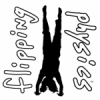Search the Community
Showing results for tags 'resistivity'.
-

Video Discussion: AP Physics 1: Electricity Review
Flipping Physics posted a topic in AP Physics 1/2
Name: AP Physics 1: Electricity Review Category: Exam Prep Date Added: 14 April 2015 - 03:39 PM Submitter: Flipping Physics Short Description: None Provided Review of the Electricity topics covered in the AP Physics 1 curriculum. Want View Video-
- current
- resistance
-
(and 8 more)
Tagged with:
-
182 downloads
Students will independently determine the resistivity of an unknown material (Play-Doh) using common electrical equipment available in the lab. Students have been introduced to Ohm’s Law and the Resistance of a Resistor formulas previously, and have had a very brief introduction to building electrical circuits from a schematic from the “Resistivity” Lab. Students have also used ammeters and voltmeters in the resistivity lab, though all the equipment is still quite unfamiliar. The goal of this activity is to reinforce Ohm’s Law and the resistance equation in a practical sense, while guiding the students to develop their own experimental procedure and analysis in an inquiry-based format. The added challenge of students working with circuit schematics to design and build their own circuits will also provide them a head start into our next activities, focused on series and parallel circuit analysis. Objectives: CIR.A2 I can utilize Ohm’s Law to solve for current, voltage, and resistance. CIR.A3 I can calculate the resistance of a conductor CIR.B3 I can use voltmeters and ammeters effectively Materials: Play-Doh Ammeter Voltmeter DC Power Supply Connecting WiresFree -
File Name: Inquiry Lab - Resistivity of Play-Doh File Submitter: FizziksGuy File Submitted: 27 Feb 2014 File Category: Electricity Students will independently determine the resistivity of an unknown material (Play-Doh) using common electrical equipment available in the lab. Students have been introduced to Ohm’s Law and the Resistance of a Resistor formulas previously, and have had a very brief introduction to building electrical circuits from a schematic from the “Resistivity” Lab. Students have also used ammeters and voltmeters in the resistivity lab, though all the equipment is still quite unfamiliar. The goal of this activity is to reinforce Ohm’s Law and the resistance equation in a practical sense, while guiding the students to develop their own experimental procedure and analysis in an inquiry-based format. The added challenge of students working with circuit schematics to design and build their own circuits will also provide them a head start into our next activities, focused on series and parallel circuit analysis. Objectives: CIR.A2 I can utilize Ohm’s Law to solve for current, voltage, and resistance. CIR.A3 I can calculate the resistance of a conductor CIR.B3 I can use voltmeters and ammeters effectively Materials: Play-Doh Ammeter Voltmeter DC Power Supply Connecting Wires
Terms of Use
The pages of APlusPhysics.com, Physics in Action podcasts, and other online media at this site are made available as a service to physics students, instructors, and others. Their use is encouraged and is free of charge. Teachers who wish to use materials either in a classroom demonstration format or as part of an interactive activity/lesson are granted permission (and encouraged) to do so. Linking to information on this site is allowed and encouraged, but content from APlusPhysics may not be made available elsewhere on the Internet without the author's written permission.
Copyright Notice
APlusPhysics.com, Silly Beagle Productions and Physics In Action materials are copyright protected and the author restricts their use to online usage through a live internet connection. Any downloading of files to other storage devices (hard drives, web servers, school servers, CDs, etc.) with the exception of Physics In Action podcast episodes is prohibited. The use of images, text and animations in other projects (including non-profit endeavors) is also prohibited. Requests for permission to use such material on other projects may be submitted in writing to info@aplusphysics.com. Licensing of the content of APlusPhysics.com for other uses may be considered in the future.

